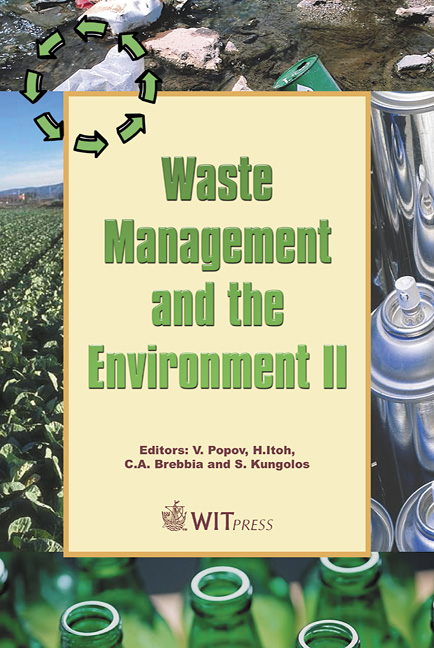Bisphenol A Contamination Of Wastepaper, Cellulose And Recycled Paper Products
Price
Free (open access)
Transaction
Volume
78
Pages
8
Published
2004
Size
259 kb
Paper DOI
10.2495/WM040291
Copyright
WIT Press
Author(s)
M. Gehring, D. Vogel, L. Tennhardt, D. Weltin & B. Bilitewski
Abstract
Hormonal disturbances caused by environmental pollutants have become one of the most important issues regarding environmental and human health. Bisphenol A (BPA), octylphenol and nonylphenol are three prominent xenobiotic endocrine active compounds (EACs) mimicking natural female sex hormones (estrogens). Since both BPA and alkylphenol polyethoxylate surfactants are used in paper production the contamination of recycled paper products with these compounds can be expected. Therefore, the contamination of wastepaper, toilet paper and cellulose samples with selected EACs has been investigated. With one exception, all xenoestrogens studied were determined in all toilet paper samples at very high concentrations of 2 – 430 mg/kg dry mass (dm). The concentration of BPA in toilet paper amounted to 3.2 mg/kg dm, 45.5 mg/kg dm and 46.1 mg/kg dm. In seven fractions of separately collected municipal wastepaper the concentrations of BPA amounted to 0.093 to 5.1 mg/kg dm. In three types of cellulose the EAC concentrations were below or hardly above the respective limit of quantitation. Toilet paper, thus, was shown being an important source of xenoestrogen emissions to wastewater. Thermal paper again is assessed as being a major source for the contamination of recycled paper products with BPA. Because of the distinct contamination with xenoestrogens, both paper waste and recycled paper products should not be mixed with biological waste e.g. for co-composting or co-fermentation in order to derive organic fertilisers. Keywords: endocrine active compounds, environmental estrogens, wastepaper, toilet paper, cellulose, bisphenol A, nonylphenol, ethoxylates, endocrine disruption.
Keywords
endocrine active compounds, environmental estrogens, wastepaper, toilet paper, cellulose, bisphenol A, nonylphenol, ethoxylates, endocrine disruption.





